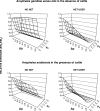Preventing childhood malaria in Africa by protecting adults from mosquitoes with insecticide-treated nets
- PMID: 17608562
- PMCID: PMC1904465
- DOI: 10.1371/journal.pmed.0040229
Preventing childhood malaria in Africa by protecting adults from mosquitoes with insecticide-treated nets
Abstract
Background: Malaria prevention in Africa merits particular attention as the world strives toward a better life for the poorest. Insecticide-treated nets (ITNs) represent a practical means to prevent malaria in Africa, so scaling up coverage to at least 80% of young children and pregnant women by 2010 is integral to the Millennium Development Goals (MDG). Targeting individual protection to vulnerable groups is an accepted priority, but community-level impacts of broader population coverage are largely ignored even though they may be just as important. We therefore estimated coverage thresholds for entire populations at which individual- and community-level protection are equivalent, representing rational targets for ITN coverage beyond vulnerable groups.
Methods and findings: Using field-parameterized malaria transmission models, we show that high (80% use) but exclusively targeted coverage of young children and pregnant women (representing <20% of the population) will deliver limited protection and equity for these vulnerable groups. In contrast, relatively modest coverage (35%-65% use, with this threshold depending on ecological scenario and net quality) of all adults and children, rather than just vulnerable groups, can achieve equitable community-wide benefits equivalent to or greater than personal protection.
Conclusions: Coverage of entire populations will be required to accomplish large reductions of the malaria burden in Africa. While coverage of vulnerable groups should still be prioritized, the equitable and communal benefits of wide-scale ITN use by older children and adults should be explicitly promoted and evaluated by national malaria control programmes. ITN use by the majority of entire populations could protect all children in such communities, even those not actually covered by achieving existing personal protection targets of the MDG, Roll Back Malaria Partnership, or the US President's Malaria Initiative.
Conflict of interest statement
Figures



References
-
- Millennium Project. Final report to United Nations Secretary General. London/Sterling VA: United Nations; 2005. 356
-
- Ross R. The prevention of malaria. London: Murray; 1911. 669
-
- Cohen JE, Gurtler RE. Modeling household transmission of American trypanosomiasis. Science. 2001;293:694–698. - PubMed
-
- Khan ZR, Ampong-Nyarko K, Chiliswa P, Hassanali A, Kimani S, et al. Intercropping increases parasitism of pests. Nature. 1997;388:631–632.
Publication types
MeSH terms
Substances
Grants and funding
LinkOut - more resources
Full Text Sources
Medical

